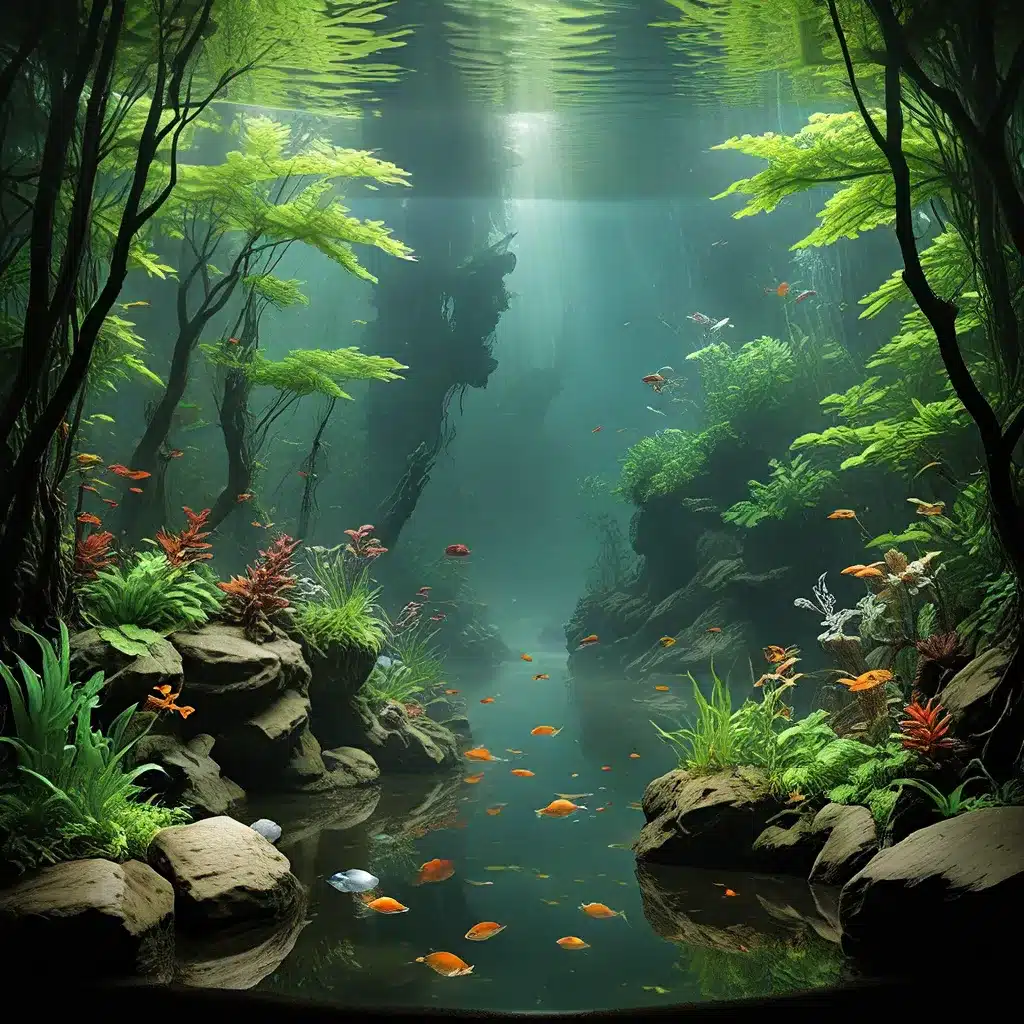
Mastering the Art of Aquascaping: Elevate Your Aquarium’s Allure
As an aquarium enthusiast, you understand the captivating power of a well-designed underwater landscape. Beyond merely providing a habitat for your aquatic inhabitants, a beautifully crafted aquascape can transform your aquarium into a living work of art, captivating the senses and immersing you in an enchanting underwater wonderland. The secret to creating these breathtaking aquatic masterpieces lies in the art of aquascaping – a creative endeavor that combines the science of aquatic biology, the principles of landscape design, and your unique artistic vision.
In this comprehensive guide, we’ll embark on an exciting journey into the world of aquascaping, delving into the essential techniques, design principles, and artistic inspirations necessary to forge stunning underwater landscapes within your freshwater or saltwater aquarium. As you enhance your aquascaping knowledge and skills, you’ll unlock endless creative possibilities, empowering you to elevate your aquarium’s visual appeal, ecological balance, and immersive allure.
Exploring the Diverse Styles of Aquascaping
Familiarize yourself with the various aquascaping styles to gain a deeper understanding of the artistic possibilities and identify your unique preferences. Some of the most popular styles include:
-
Nature Aquarium Style: Pioneered by the renowned aquascaper Takashi Amano, this style emulates natural landscapes like forests, mountains, or valleys using live plants, rocks, and driftwood to create an organic, cohesive environment.
-
Dutch Aquarium Style: Famed for its vibrant, lush plant arrangements, this style focuses on creating a visually striking underwater garden with contrasting colors, textures, and plant heights. Hardscape elements like stones or driftwood are typically absent.
-
Iwagumi Style: Minimalistic and serene, this Japanese-inspired style utilizes carefully composed arrangements of rocks as its central focal point, accompanied by low-carpeting plants.
-
Biotope Aquarium Style: This faithful replication of specific natural habitats aims to provide the most realistic and ecologically accurate environments for your aquarium inhabitants.
Essential Components of a Successful Aquascape
Crafting a captivating aquascape relies on three primary components:
-
Plants: Live plants add visual appeal, assist with water filtration, and provide shelter and grazing opportunities for your aquarium inhabitants. When selecting plants, consider factors such as lighting requirements, growth rates, and compatibility with your aquatic environment.
-
Hardscape: Incorporating hardscape elements like rocks, driftwood, and ornaments adds structure, depth, and visual interest to your aquascape. Choices should be based on the selected style, size of your aquarium, and the desired overall aesthetic.
-
Substrate: The right substrate not only anchors plants and supports the hardscape but also enhances the overall visual appeal. Options include sand, gravel, or planted tank-specific soils, depending on your aquascape style and plant requirements.
Applying Design Principles for Captivating Aquascapes
Applying basic design principles will help you create a harmonious and visually compelling aquatic landscape:
-
Rule of Thirds: Using the classic photography composition principle, imagine your aquarium divided into a 3×3 grid, with the gridline intersections being aesthetically pleasing focal points or areas to place key hardscape elements.
-
Balance and Symmetry: Strive for balance in your design, blending repetition and contrast. However, avoid linear symmetry as it can appear unnatural and less visually interesting.
-
Depth Perception: To enhance the illusion of depth, consider techniques like placing larger, more prominent elements towards the front and smaller, more delicate items towards the back.
-
Color and Texture: Create visual intrigue and harmony by using a variety of plants and hardscape materials with complementary colors, textures, and sizes.
Elevating Your Aquascaping Prowess
To take your aquascaping skills to the next level, consider investing in specialized tools and techniques:
-
Precision Tools: Aquascaping scissors, tweezers, and spatulas allow for precise control of plant trimming, planting, and hardscape manipulation.
-
CO2 Injection System: Enhance the health and growth of your aquatic plants by maintaining optimal CO2 levels using an injection system designed for planted aquariums.
-
Fertilizers and Supplements: Encourage robust plant growth by using aquarium-safe fertilizers and supplements as needed.
-
Lighting: Create an optimal aquatic environment by selecting the appropriate lighting system for your plant and aquascape requirements.
-
Pruning and Maintenance: Regularly trim plants and carry out maintenance tasks to keep your aquascape in peak condition and encourage healthy growth.
Unlocking Your Creativity: Becoming a Master Aquascaper
By delving into the captivating world of aquascaping and honing your aquatic landscape design skills, you unveil a realm of endless creative possibilities. Mastering the art of aquascaping not only enhances the visual appeal of your aquarium but also fosters a healthier, more engaging environment for your aquatic inhabitants.
As you continue to explore the diverse styles, techniques, and components of aquascaping, unleash your creative potential and transform your aquarium into a living masterpiece that both captivates and inspires. Ready to become a master aquascaper? Dive into the exceptional range of premium saltwater and freshwater aquariums and displays at King Aquarium and craft the underwater landscape of your dreams by browsing their selection of essential aquascaping tools and supplies today.

